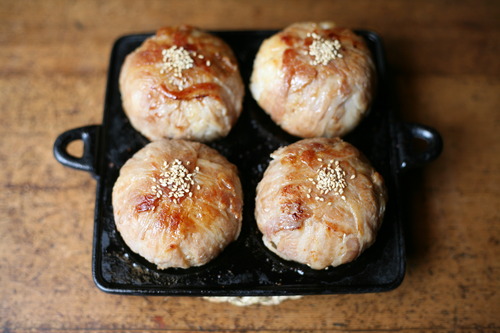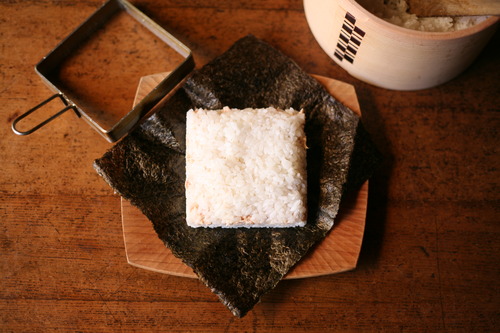


[Onigiri and Omusubi]
Japan is the land of rice. In Japan, onigiri is both a soul food and a fast food. Why the triangle shape and why is it also called "omusubi"?
There is a theory that onigiri imitates the shape of a mountain. People in the past believed that "God lives in the mountains" and "when God comes from the sky to the earth, he first descends to the top of the mountain." And the belief that "the mountain is God" became "the shape of the mountain is the shape of God."
The word "musubu" in omusubi (rice ball) has its roots in Japanese mythology, from "産霊 (musuhi, musubi)" meaning "birth spirit It refers to the divine spirit that gives birth to the universe and all things, and the power of the divine spirit is created when they are tied together. The word "musubu" means "to connect" or "to create a strong relationship," and is also used in the sense of connecting karma and hearts. Mizuhiki used for congratulatory gifts, also has the meaning of connecting people by tying them together.
Onigiri rice balls are made in a triangular shape to connect with God. People came to hold onigiri with the hope of attaining the power of the gods and spending another day safely, and they were also used as meals for working in the fields, picnic lunches, and as portable food for travelers.
Onigiri have been around since the Heian period (794-1185), but it was not until the mid-Edo period (1603-1868) that they began to be wrapped in seaweed. Until then, it was more like salted musubi. In 1978, 7-Eleven commercialized a hand-rolled type of onigiri with crispy laver, and since then onigiri have become a mainstay product of convenience stores, and the triangular shape has become a nationwide standard.
Today, we see new ideas of onigiri such as "onigiri rolled with meat" and "onigirirazu." If you know the reason for the shape of onigiri, making and eating onigiri may become more enjoyable.
Rikucho Ogasawara's Onigiri Iron Plate
https://www.shokunin.com/en/rikucho/onigiri.html
Yamasaki Design Works's Sandwich Guide
https://www.shokunin.com/en/yamasaki/sandwich.html
Reference
『日本の「なぜ?」に答えるお話100』 PHP研究所
https://www.onigiri.or.jp/history
https://www.gohansaisai.com/know/entry/detail.html?i=189
https://kotobank.jp/word/産霊-641713